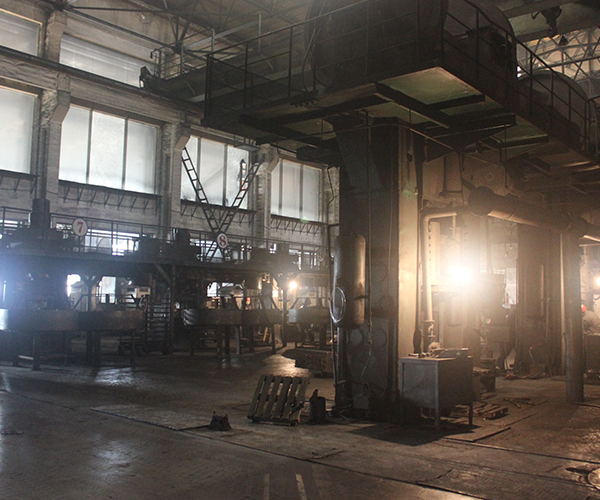Contact: Manager Qu
Phone: +86 15330915520
Contact: Manager Liu
Phone: +86 13464791403
Address: Dashiqiao City, Liaoning Province
Another example is the phosphate refractory castable Liaoning magnesia chrome bricks, which can be widely used in heating furnaces and soaking furnaces for heating metals, as well as coke ovens and cement kilns that directly contact the materials. In some parts of metallurgical furnaces and other vessels that are in direct contact with slag and molten metal, repairing with high-quality phosphate refractory castables also has a good effect.
Mainly siliceous raw materials, such as: quartz, tridymite, cristobalite, chalcedony, flint, opal, quartzite, white silica sand, diatomaceous earth, these siliceous raw materials contain silicon oxide (SiO2) at least 90% , The pure raw material contains silicon oxide as high as 99%. Siliceous raw materials are acidic in the high-temperature chemical dynamics. When metal oxides are present or in contact with them, they play a chemical role and combine to form fusible silicates. Therefore, if the silicon material contains a small amount of metal oxide, its heat resistance will be seriously affected. Magnesia-carbon bricks are made of magnesia, re-burned magnesia, fused magnesia, high-purity magnesia, and high-quality graphite and bauxite additives. The price and performance of magnesia-carbon bricks are closely related to the graphite content in the bricks. As the graphite content increases, the strength of the brick decreases, the thermal expansion rate decreases, and the residual expansion of the magnesia-chrome brick increases.

Therefore, the graphite content in the brick should be controlled at about 20%. Magnesia carbon bricks have little wettability to molten slag, have excellent spalling resistance and corrosion resistance, and are suitable for the slag line of the ladle, especially in the occasion of multiple furnace continuous casting. In order to meet the needs of producing clean steel, when refining in the ladle, the application part of the magnesia carbon brick has been expanded from the slag line to the side wall. The main raw material of reinforced magnesia-carbon bricks and tapholes uses high-purity, high-volume density, high CaO/SiO2, low porosity, crystalline fused magnesia and sintered magnesia; graphite uses high-purity flake graphite; The binder uses phenolic resin that can form an inlaid structure at high temperature. As the country of origin of magnesia-carbon shaped products in the world, Japan has shut down most of its domestic magnesia carbon brick production lines, and some small carbon brick production lines have changed their functions. , And used as a new technology research and development. China has the world’s highest quality magnesia resources and graphite resources, coupled with China’s low labor costs, making the magnesia-carbon shaped products made in China very competitive in the world market. China currently has magnesia-carbon brick manufacturers Nearly 200, with a total annual output of more than 2 million tons. The reinforced magnesia-carbon bricks and taps are in the country's magnesia-chrome brick manufacturers.
The total annual demand in the domestic market is more than 600,000 tons, and there are also nearly 50 square tons of export forecasts in the world. Metal and non-oxide magnesia carbonaceous non-burning bricks and tapping bricks replace ordinary bricks. The market space and potential are huge. The open porosity of sintered oxide refractories is about 12%, and most of these pores can be filled with tar pitch or resin. Due to the relatively low density and volatility of volatile matter, the residual carbon rate of such products is about 2% to 3%. Using special grade bauxite clinker, fused magnesia, phenolic resin and high-purity graphite as the main raw materials, the aluminum-magnesium-carbon bricks developed with various additives are used in the 80-ton converter ladle of the Xuangang Steelmaking Plant and have achieved good results , To meet the requirements of production. 1 Wet gunning is to mix refractory aggregates, binders, additives and water to make a slurry with a certain consistency, and then spray the slurry to the gunning machine with compressed air magnesium aluminum carbon bricks. A method of surface magnesia carbon brick. Its characteristics are simple operation, high adhesion rate and rapid sintering. However, due to the large water content and finer grain size, the shrinkage is also greater. At the same time, because the gunning layer is thinner, the durability is not very good.
Flame gunning is to use compressed oxygen to transport the refractory aggregate, flux or heating agent to the nozzle, mix it with high calorific value fuel and burn it, and instantly heat the surface of the magnesia-aluminum-carbon brick fire-resistant aggregate particles to melt or semi-melt State, and then spray the repair method adhered to the furnace lining. The gunning layer obtained by this construction method has a dense structure, high strength, strong erosion resistance, erosion resistance, and durability. But the flame gunning device is expensive, the technology is complicated, and the construction consumes a lot of energy.